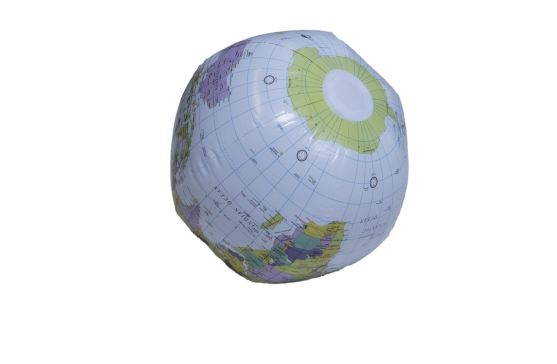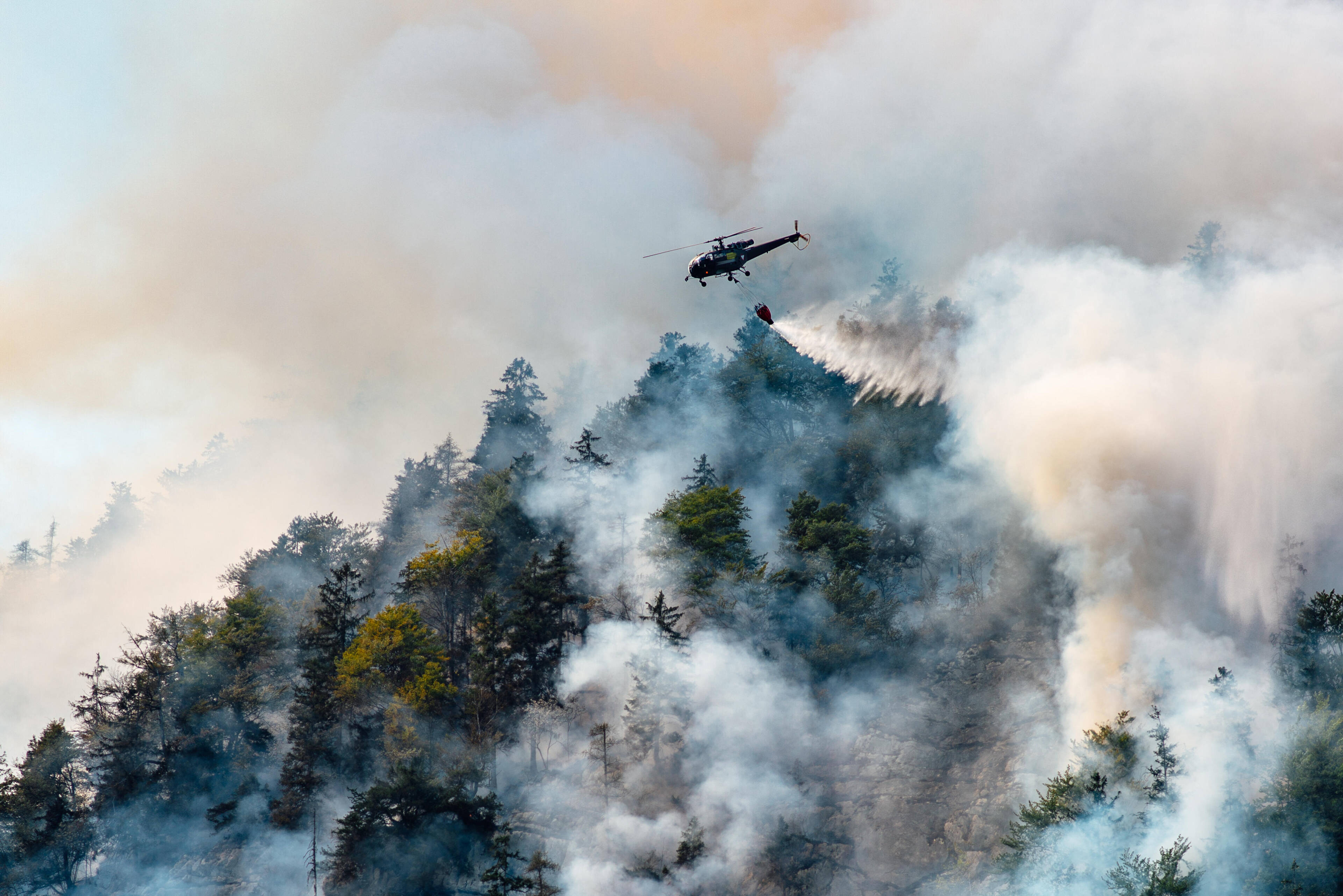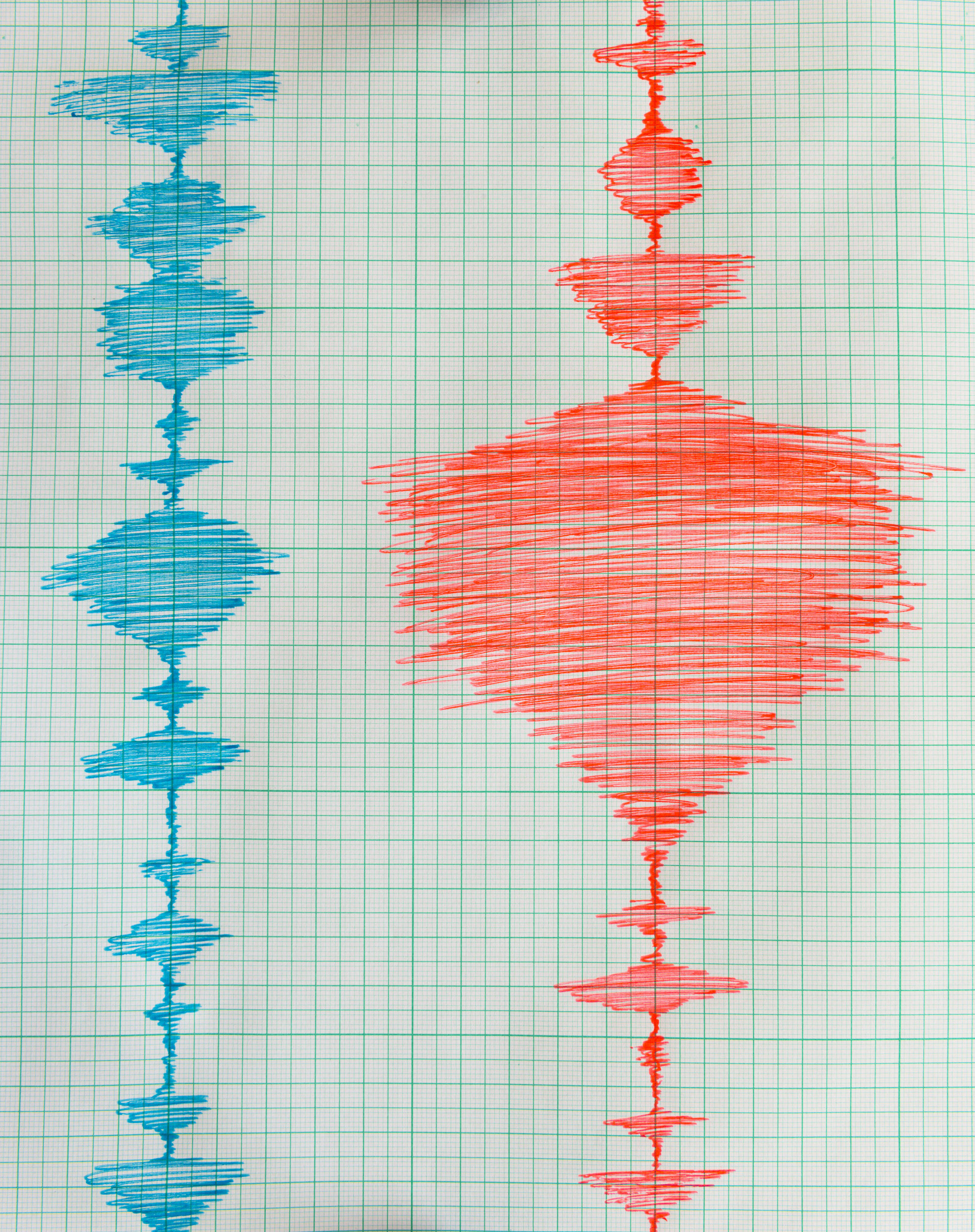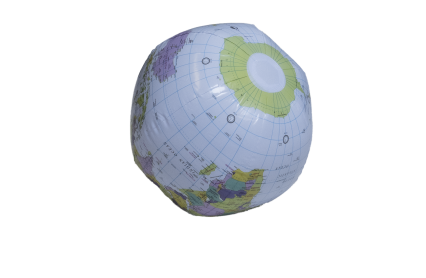
Five questions for two leading experts
these risks?
you protect yourself?
the biggest climate risks?
does insurance company
FM play?
5 questions






Share:
Before our conversation begins, Arjan van Schooten (Senior Production Underwriter at FM Affiliated) produces a blue plastic globe from his bag. It contains a rock-hard ball of ice about the size of a tennis ball. ‘There are parts of the world in which hailstones this size fall from the sky.’ A simple symbol with which he wishes to emphasise that international businesses operating from the Netherlands should never underestimate the risks of global natural disasters. We have five questions for him and his colleague Ebbo Bierenga (Branch Manager FM) about identifying, modelling, preventing, managing and insuring against the risks associated with so-called Catastrophes Naturelles (Cat Nat).
1
Van Schooten: ‘We are a leading global mutual insurance company and experts on loss prevention for international companies. Our work is based on own-risk investigation and analyses and we can draw on 190 years of experience in the business. We go about our work in a deeper, broader and more detailed manner than other parties in the international risk management and insurance market. In almost everything we do, we apply our own FM-developed standards, which are among the most important quality marks in the global insurance market. We are a trusted partner for the international companies with whom we work and we share our knowledge and experience with the most highly rated insurance brokers. And also, for many years now, with the risk engineers and international experts at Meijers Global & Specialty.’

2
Bierenga: ‘They can be split up into different categories. To start with, flooding and the effects of heavy rainfall. And not only floods and persistent rain but also severe and extremely destructive hailstorms. Earthquakes and landslides may not be caused by changes in our climate but they can trigger tsunamis and so they also fall into this category. Another category is wind. It can have a major impact in all its many forms on regions and buildings and on the people who live and work there. We are all familiar with images of violent storms, hurricanes, typhoons and tornados. Flooding and wind are the two most destructive natural phenomena across the globe. In addition, we are also seeing a rapid rise in the number and intensity of large wildfires.’
3
Van Schooten: ‘It all starts with the science. We focus on risks that are often less considered from a Dutch perspective. We gather data from a wide range of reliable sources and carry out extensive research and risk analyses in our own research centre. We want to gain a full understanding of natural disasters and their effects and to increase the awareness of the risks among our affiliated companies and partners. We do that through business impact analyses, reports, advice, online tools and training programmes.’
more about
Cat Nat risks?
4
Van Schooten: ‘Prevention is obviously essential. Taking measures to limit or eliminate risks. Because you want to avoid unpleasant surprises and also because insurance companies place stringent requirements on their customers with regard to these risks, as they sometimes demand significant action and investment. Take, for example, the hospital in the US that was advised to build an ingenious flood barrier to ward off the potential flood damage in the future.
Bierenga: ‘But it also requires what appears at first sight to be relatively simple but ultimately essential prevention measures. Using different materials when designing and constructing a new building at a new location, for instance. Removing greenery in the immediate surroundings of a building to reduce the risk of fires spreading. Or installing a one-way valve in gas pipes if you happen to be located in an earthquake zone. In the end, it’s up to the company itself to find the right balance. Where should I invest in prevention? Which risks can I take upon myself (your own choice or because insurance is either too costly or not possible) and which risks should I have insured? We help businesses to make all of these decisions, with the aim of ensuring optimal security and business continuity at an acceptable cost.’
5
Bierenga: ‘A differentiation is made between primary and secondary risks. It is relatively easy to draw up models, scenarios and predictions for primary risks, which also makes it easier to insure against them. Secondary risks are much more difficult to determine and predict. And also harder to insure. Hailstorms are a good example. They can strike all of a sudden. Many natural phenomena are becoming more severe and more widespread as a result of climate change. Take the extreme heat and floods in Southern Europe, for example. And, closer to home, the floods here in South Limburg.
Van Schooten: ‘There is also a shift happening in the traditional division between the risks that are typically found in the polar regions, the Mediterranean and the tropics. Cold airflows are now making their way from polar regions to parts of the world where we never have expected to find them. Businesses are suddenly having to deal with freezing temperatures in places where they are ill-prepared and not insured. These events are still incidental but with the Earth getting warmer they may become a new trend. We are constantly looking to develop new models and improve our ability to predict these changes. The climate is shifting and our work and the insurance market are shifting with it.’
climate change risks?

Check out these videos:
• Fifty frightening earthquakes
• The increasing threat of hurricanes
• Hailstones the size of tennis balls
• The destructive power of wildfires
About FM
FM is a leading global mutual insurance company. The customers are the owners and have a say in the long-term vision of the company. An important part of the service: excellent and science-based technical support in limiting the risk and extent of damage. FM Affiliated is an established insurance company wholly owned by FM. It shares the same DNA as its parent company.
Table of contents

these risks?
you protect yourself?
the biggest climate risks?

does insurance company
FM play?
Five questions for two leading experts
5 questions



Table of contents
About FM
FM is a leading global mutual insurance company. The customers are the owners and have a say in the long-term vision of the company. An important part of the service: excellent and science-based technical support in limiting the risk and extent of damage. FM Affiliated is an established insurance company wholly owned by FM. It shares the same DNA as its parent company.
• The destructive power of wildfires
• Hailstones the size of tennis balls
• The increasing threat of hurricanes
• Fifty frightening earthquakes
Check out these videos:
more about
Cat Nat risks?
5
Bierenga: ‘A differentiation is made between primary and secondary risks. It is relatively easy to draw up models, scenarios and predictions for primary risks, which also makes it easier to insure against them. Secondary risks are much more difficult to determine and predict. And also harder to insure. Hailstorms are a good example. They can strike all of a sudden. Many natural phenomena are becoming more severe and more widespread as a result of climate change. Take the extreme heat and floods in Southern Europe, for example. And, closer to home, the floods here in South Limburg.
Van Schooten: ‘There is also a shift happening in the traditional division between the risks that are typically found in the polar regions, the Mediterranean and the tropics. Cold airflows are now making their way from polar regions to parts of the world where we never have expected to find them. Businesses are suddenly having to deal with freezing temperatures in places where they are ill-prepared and not insured. These events are still incidental but with the Earth getting warmer they may become a new trend. We are constantly looking to develop new models and improve our ability to predict these changes. The climate is shifting and our work and the insurance market are shifting with it.’
climate change risks?
4
Van Schooten: ‘Prevention is obviously essential. Taking measures to limit or eliminate risks. Because you want to avoid unpleasant surprises and also because insurance companies place stringent requirements on their customers with regard to these risks, as they sometimes demand significant action and investment. Take, for example, the hospital in the US that was advised to build an ingenious flood barrier to ward off the potential flood damage in the future.
Bierenga: ‘But it also requires what appears at first sight to be relatively simple but ultimately essential prevention measures. Using different materials when designing and constructing a new building at a new location, for instance. Removing greenery in the immediate surroundings of a building to reduce the risk of fires spreading. Or installing a one-way valve in gas pipes if you happen to be located in an earthquake zone. In the end, it’s up to the company itself to find the right balance. Where should I invest in prevention? Which risks can I take upon myself (your own choice or because insurance is either too costly or not possible) and which risks should I have insured? We help businesses to make all of these decisions, with the aim of ensuring optimal security and business continuity at an acceptable cost.’
2
Bierenga: ‘They can be split up into different categories. To start with, flooding and the effects of heavy rainfall. And not only floods and persistent rain but also severe and extremely destructive hailstorms. Earthquakes and landslides may not be caused by changes in our climate but they can trigger tsunamis and so they also fall into this category. Another category is wind. It can have a major impact in all its many forms on regions and buildings and on the people who live and work there. We are all familiar with images of violent storms, hurricanes, typhoons and tornados. Flooding and wind are the two most destructive natural phenomena across the globe. In addition, we are also seeing a rapid rise in the number and intensity of large wildfires.’
Before our conversation begins, Arjan van Schooten (Senior Production Underwriter at FM Affiliated) produces a blue plastic globe from his bag. It contains a rock-hard ball of ice about the size of a tennis ball. ‘There are parts of the world in which hailstones this size fall from the sky.’ A simple symbol with which he wishes to emphasise that international businesses operating from the Netherlands should never underestimate the risks of global natural disasters. We have five questions for him and his colleague Ebbo Bierenga (Branch Manager FM) about identifying, modelling, preventing, managing and insuring against the risks associated with so-called Catastrophes Naturelles (Cat Nat).
3
Van Schooten: ‘It all starts with the science. We focus on risks that are often less considered from a Dutch perspective. We gather data from a wide range of reliable sources and carry out extensive research and risk analyses in our own research centre. We want to gain a full understanding of natural disasters and their effects and to increase the awareness of the risks among our affiliated companies and partners. We do that through business impact analyses, reports, advice, online tools and training programmes.’
1
Van Schooten: ‘We are a leading global mutual insurance company and experts on loss prevention for international companies. Our work is based on own-risk investigation and analyses and we can draw on 190 years of experience in the business. We go about our work in a deeper, broader and more detailed manner than other parties in the international risk management and insurance market. In almost everything we do, we apply our own FM-developed standards, which are among the most important quality marks in the global insurance market. We are a trusted partner for the international companies with whom we work and we share our knowledge and experience with the most highly rated insurance brokers. And also, for many years now, with the risk engineers and international experts at Meijers Global & Specialty.’




Share:




